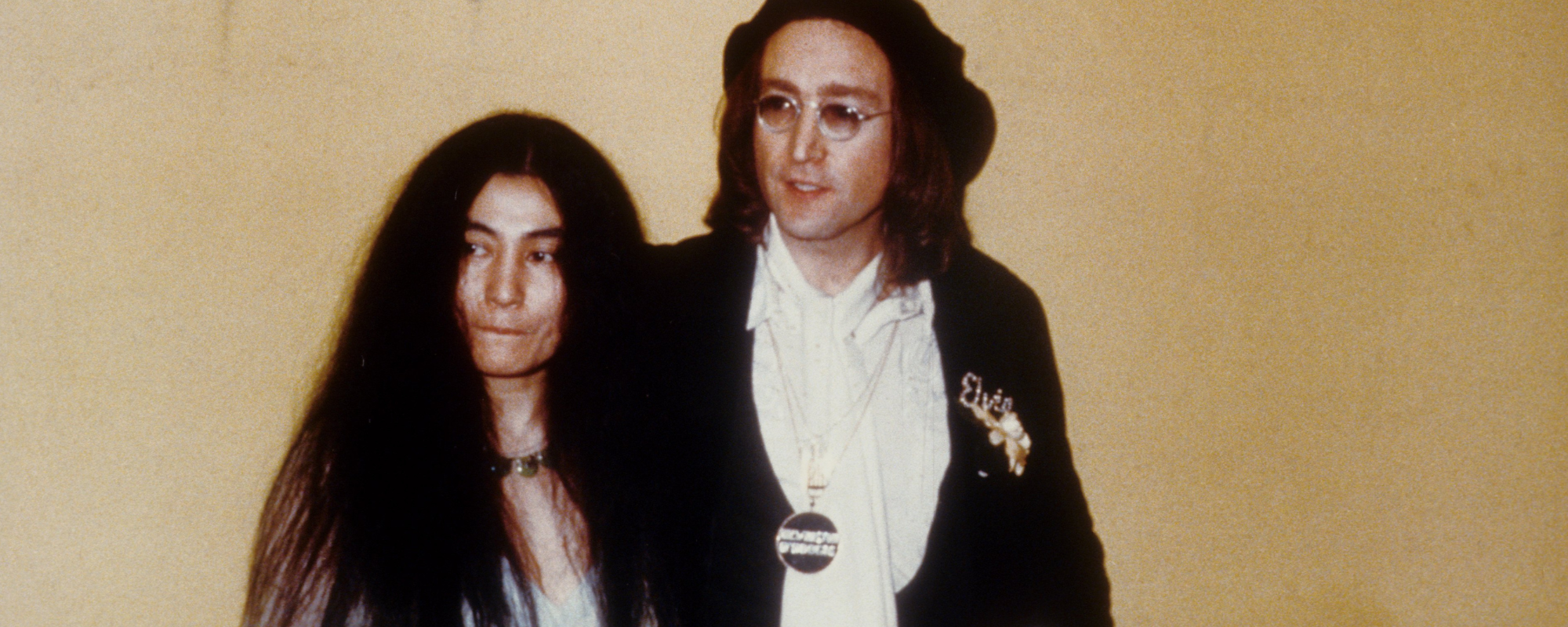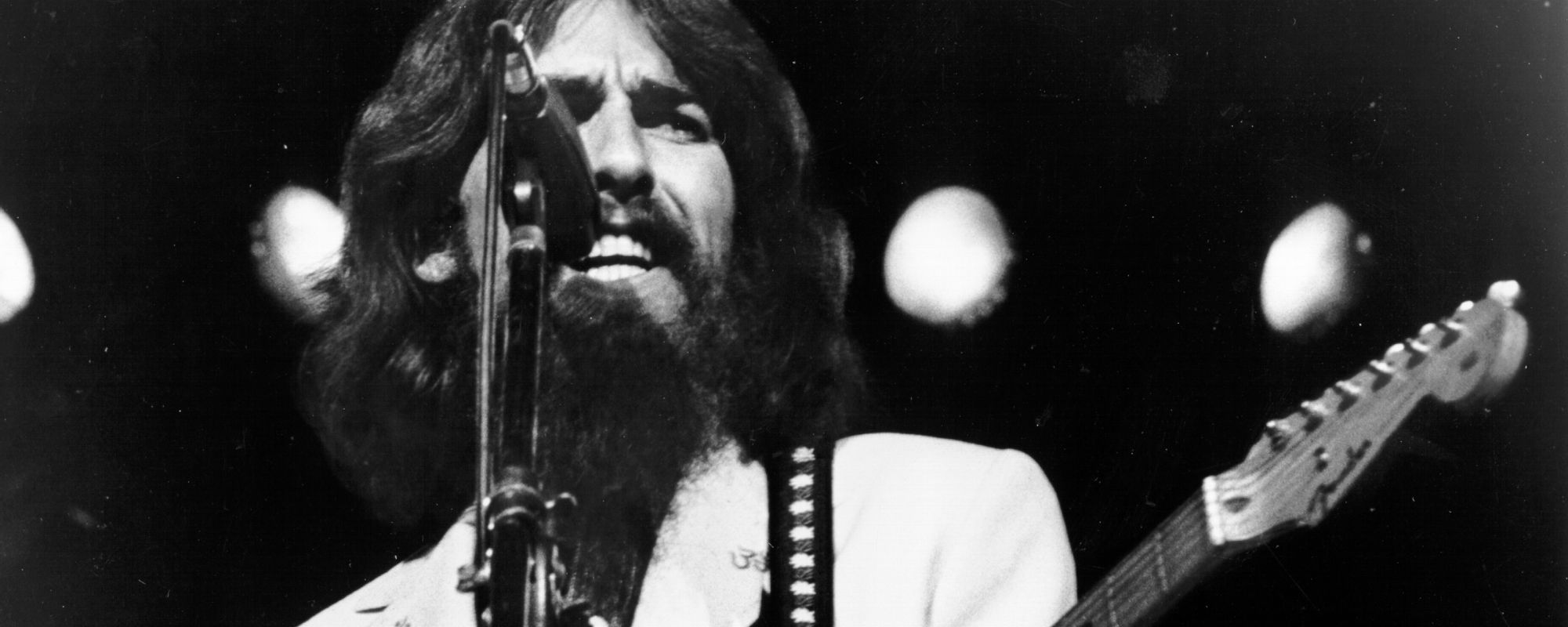The year 1984 was a big one for Billy Idol. While his self-titled debut album from two years earlier had produced two successful singles—“Hot in the City” and “White Wedding”—it would be the Rebel Yell album and its fist-pumping title track that would transform him into a household name. Funnily enough, the song “Rebel Yell” did not chart as high as his two previous singles, but MTV’s constant exposure of the highly charged performance video really boosted its profile. The clip featured Idol with his band commanding the stage, throwing punches at the camera, and unleashing his signature sneer on the masses. The controlled chaos of his performance cemented him as a modern rock star.
Videos by American Songwriter
A Cry of Love
While “Rebel Yell” itself was a balls-out rocker with a fiery solo from Idol’s songwriting partner and guitarist Steve Stevens, it was not simply about a late-night hookup as the lyrics implied. It held a deeper meaning for Idol who, through songs like this, brought the attitude of punk into mainstream rock music.
“It was about my girlfriend at the time, Perri Lister,” Idol told me during a Grammy.com interview in 2022. “It was about how great I thought she was, how much I was in love with her, and how great women are, how powerful they are. It was a bit of a feminist anthem in a weird way. It was all about how relationships can free you and add a lot to your life. It was a cry of love, nothing to do with the Civil War or anything like that. Perri was a big part of my life, a big part of being Billy Idol. I wanted to write about it.”
The song and album were recorded at the famous Electric Lady Studios on in Manhattan. Producer Keith Forsey set behind the mixing desk, and at the start they used an electronic drum machine until they borrowed drummer Thommy Price from his recording sessions with Scandal. He had the rhythmic pulse they needed.
Spontaneous Soliloquy
The original version of “Rebel Yell” was a little too slow for Forsey, so he had it rerecorded at a slightly faster tempo. While Stevens originally balked at the idea, he later admitted the producer made the right call.
When it came to the subdued middle section of “Rebel Yell” after Stevens’ hair-raising guitar solo, there were no specific lyrics written. Idol ended up freestyling them in the studio. As Stevens told me in a 2006 interview for Mix magazine, this album was recorded in the “early days of combining dance elements with rock ‘n’ roll, so we always built in 32 bars, not knowing exactly what we’d do in the middle of the song. We did that with ‘White Wedding,’ ‘Eyes Without a Face,’ and ‘Rebel Yell.’ We gave Billy a cassette, and he’d go home and come back with something, then we’d just make it somehow work.”
Forsey told me for that same Mix interview that he waited for Idol to come up with a genius line, but when he initially attempted to sing that spontaneous part, nothing magical happened.
“Then we moved to another studio downtown, and I gave him a [Shure] 57, no mic stand, and he just wandered around the studio and sang,” Forsey recalled. “All of a sudden, I walk the ward for you, babe just dropped out right there, and it was fantastic. It was really one of those moments in the studio where you get the chills and the hair stands up on your arms, and you know you’ve got something really good.”
I walked the ward for you, babe
A thousand miles for you
Now who dried my tears of pain, babe?
A million times for you, for you
I’d sell my soul for you, babe
What’s money to burn for you, for you
I’d give you all, and have none, babe
Justa, justa have you here by me
Idol’s Breakthrough Hit
Although the album came out in late 1983, the Rebel Yell title track climbed to No. 46 on the Billboard Hot 100 Singles Chart by late March. It landed him the first of three Grammy Award nominations for Best Male Rock Vocal Performance, was a mainstay on MTV, and became the first of four singles from the album. The follow-up, the moody and electrifying ballad “Eyes Without a Face,” hit No. 4 and became the first of four career Top 10 hits for the British punk rocker. The other singles “Flesh for Fantasy” and “Catch My Fall” helped add to the album’s take, and by January 1985 it was certified double Platinum.
Idol continued to have a solid career throughout the rest of the decade, notching three more Platinum albums and seeing his debut album go Gold after the release of Rebel Yell. The effervescent performer released many memorable songs during and after this time, including “Sweet Sixteen,” the remixed Generation X song “Dancing with Myself,” and a live cover of “Mony Mony,” which went to No. 1 in 1987. While Idol embarked on a long hiatus following his Cyberpunk album in 1993, he released the excellent Devil’s Playground album in 2005 and has been touring solidly and releasing more new music since then, including the Cage EP in 2022.
“Rebel Yell” will always hold a special place in the hearts of Billy Idol fans. He might have called it a cry for love, but it was also a declaration of his unique personality which was a big part of the rock culture of the 1980s. The hit remains a staple of his live set. The Rebel Yell album turned 40 recently, and the new deluxe reissue includes a previously unreleased cover of the Rose Royce song “Love Don’t Live Here Anymore.”
“That record was amazing,” Stevens recalled of Rebel Yell during our Mix interview. “It put him on the map as an arena-rock artist, and it also cemented our working relationship that is still intact today. There’s no denying that there was definitely a sound that was created with his voice and my guitar that hadn’t existed before.”
When you purchase through links on our site, we may earn an affiliate commission.
Photo by Vinnie Zuffante/Getty Images













Leave a Reply
Only members can comment. Become a member. Already a member? Log in.